Will Macy’s Total Makeover Lead to a Turnaround?
The smaller, sleeker Brooklyn store is part of a bold plan by the 650-store chain to ward off the 'retail apocalypse'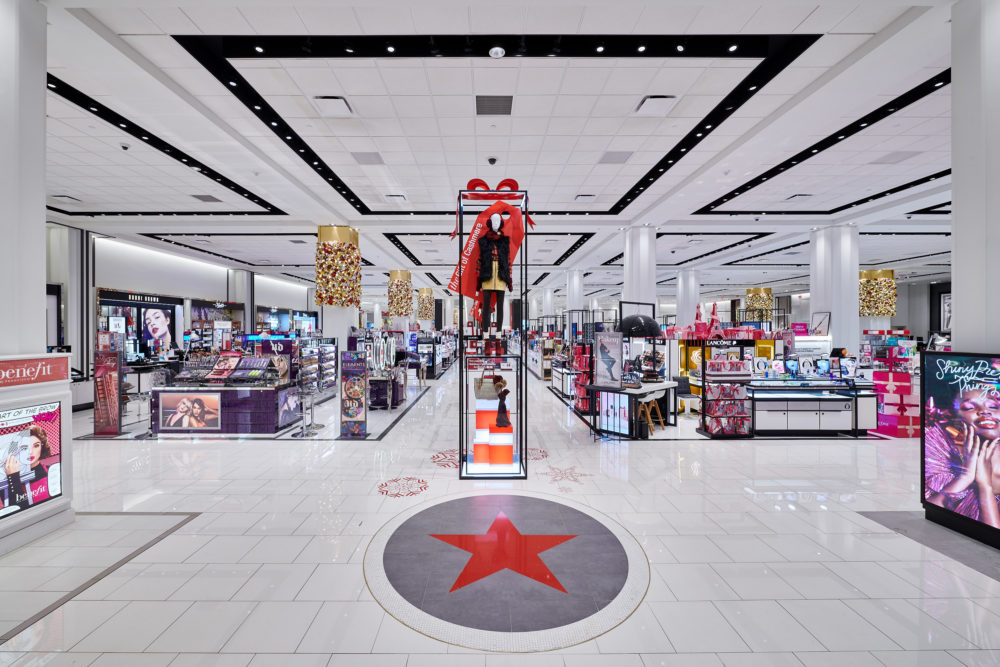
The ground floor of Macy's renovated Brooklyn store at 422 Fulton St. (Photo by Kent Miller, courtesy of Macy's)
Traditionally, everything about Macy’s is big: the July 4 fireworks, the Thanksgiving Day parade, the flagship store on Herald Square. The Macy’s store in Downtown Brooklyn has been a big landmark too, with almost nine acres of floor space at its peak.
But now the Macy’s company, squeezed like so many other big retailers, is trying to reinvent itself by thinking smaller. The Cincinnati-based company, which has 650 locations, is closing some stores while shrinking and upgrading many others.
The Brooklyn store, which re-opened last month after a three-year renovation, is a prime example of the Macy’s makeover. Floor space has shrunk by about one-fourth, to 278,000 sq. ft., consolidated on just four stories and a lower level, instead of sprawling over twice as many floors.
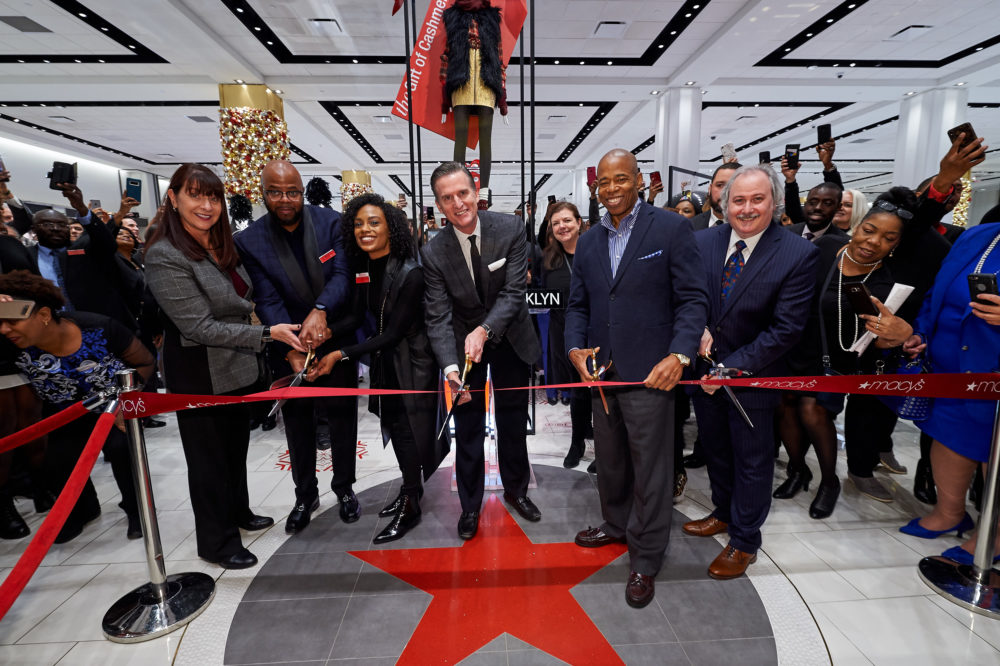
The grand-opening ceremony last month including CEO Gennette, center, and Brooklyn civic leaders (Photo by Kent Miller, courtesy of Macy’s)
The new store environment is brighter, fresher, with more energy and less clutter. Gone are the overstocked shelves and confined spaces. In their place are more visually engaging displays designed to showcase the merchandise, not just house it. The floors have a gleaming shine, while the pillars are adorned with festive decoration.
On a recent visit by The Bridge, employees were assisting a number of customers in synchrony, more than one might expect for 11:30 a.m. on a Wednesday. Alice Avouris of Windsor Terrace was being assisted by a store employee as she attempted to buy some pants for her husband. “I like it better,” said Avouris of the new-look Macy’s. “I like the floors and the [cleaner look] makes for better ‘retail therapy.’”Avouris said she doesn’t do a great deal of online buying, and is a “picky shopper.”
While the downtown store remained open during the lengthy renovation, a confusing interior layout was less than welcoming. Now Macy’s hopes shoppers will come streaming back. “We are proud to present our customers with an updated store environment, enhanced merchandise offerings and an elevated sense of customer service,” said Kizzie Tunson, vice president and store manager, in a statement. “We anticipate everyone in the community will find a reason to come in and take a second look at their local Macy’s.”
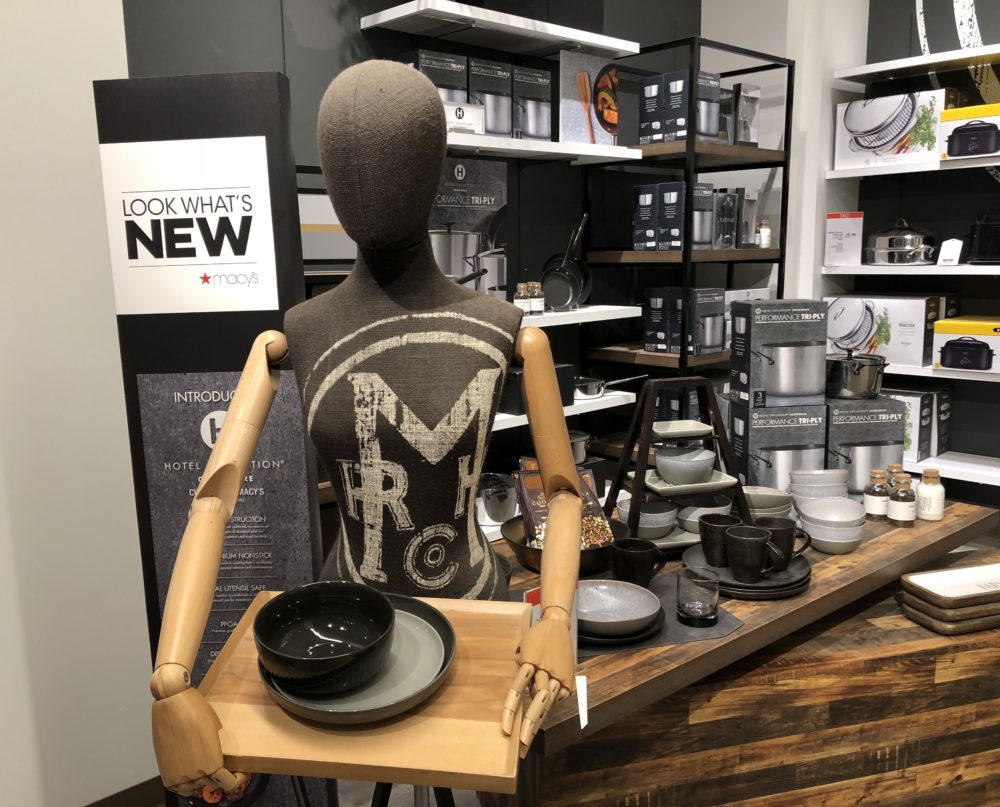
The Hotel Collection, on the store’s lower level, offers housewares from stylish pots and pans to luxurious sheets with high thread counts (Photo by Steve Koepp)
The store has played a prominent role in Brooklyn history. It started small, a 25-foot-wide storefront that opened in 1865 by a 22-year-old Bavarian immigrant named Abraham Abraham and his friend Joseph Wechsler. In 1893, the Straus family bought Weschler’s interest in the company and was renamed Abraham & Straus. The current complex was built in 1873 and later expanded in 1929 and 1947.
In its heyday, A&S became a hub of Brooklyn cultural life, with an estimated 70,000 customers a day, and it became the flagship of an 18-store chain. In 1995, however, the parent company converted all the A&S stores to better-known national brands like Macy’s and Bloomingdale’s.
As part of the current shrinking process, Macy’s has unloaded some of its extensive real estate. It sold the top five floors of the Brooklyn store (and a nearby parking garage) for $270 million to the developer Tishman Speyer, which is crowning the complex with a ten-story office tower to become a “creative hub” called The Wheeler.
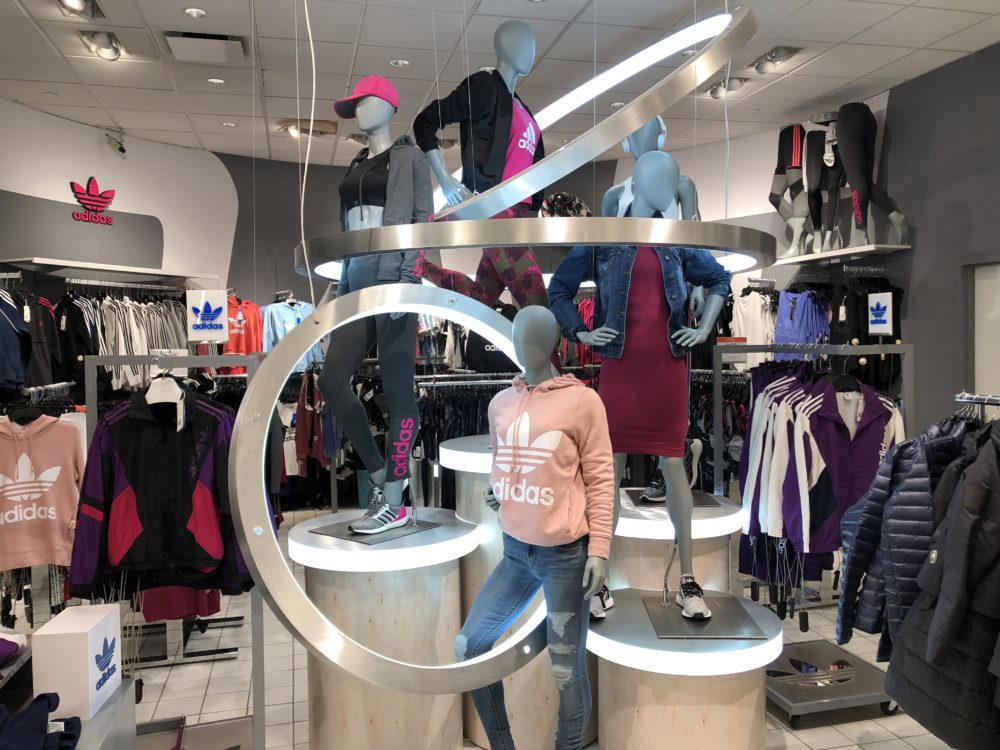
The apparel sections of the store offer mini-boutiques, like this one for Adidas (Photo by Steve Koepp)
“If your store is too big and your dollars per square feet are too low and you can’t lease the space to someone else, then you’ve got to hive off a floor,” Macy’s CEO Jeff Gennette told the Wall Street Journal last month for a story about the company’s downsizing. “If we were building stores today, we’d build them smaller,” he said.
What happened to make these radical adjustments necessary? As recently as 2015, Macy’s had operating margins hovering over 10% and sales growth was still positive. But an almost 15% reduction in gross profit since 2015 has had Macy’s scrambling for answers. Since then, the brand has lost more than 3.4 million customers, according to a report produced for Macy’s by the research-and-consulting firm GlobalData.
Online giants like Amazon certainly have played a part in this, according to Neil Saunders, managing director of retail at GlobalData. Icons ranging from Sears to Toys “R” Us have been brought down in the so-called retail apocalypse. But as much as Amazon is portrayed as the big bully who is single-handedly killing brick and mortar stores, in this case it simply isn’t true.

Sergio Arias, a frequent Macy’s customer from Howard Beach who said the renovation process had been a deterrent from shopping, was back and said the store now looks “very different” (Photo by Patrick Smith)
Most of the customer defection Macy’s is seeing is to other brick-and-mortar retailers, particularly the discounters TJ Maxx, Nordstrom Rack and Kohl’s, who have all taken a larger share of Macy’s customer base than Amazon, according to GlobalData.
“They did not evolve fast enough,” said Saunders of Macy’s performance. “And of lot of the stores look like they did in the 1970s and 1980s, which is not what customers want now.” Stores bloated with inventory, coupled with large and expensive floor space, made finding products or assistance from employees difficult. This caused customers to find the stores “uninspiring” and “dull,” according to the report.
Another problem in Macy’s strategy, said Saunders, was in promoting too many other brands rather than developing their own. When those name brands become commodities and customers shop primarily based on price, the competition is easily won by the likes of TJ Maxx, who built their entire business on the discount model.
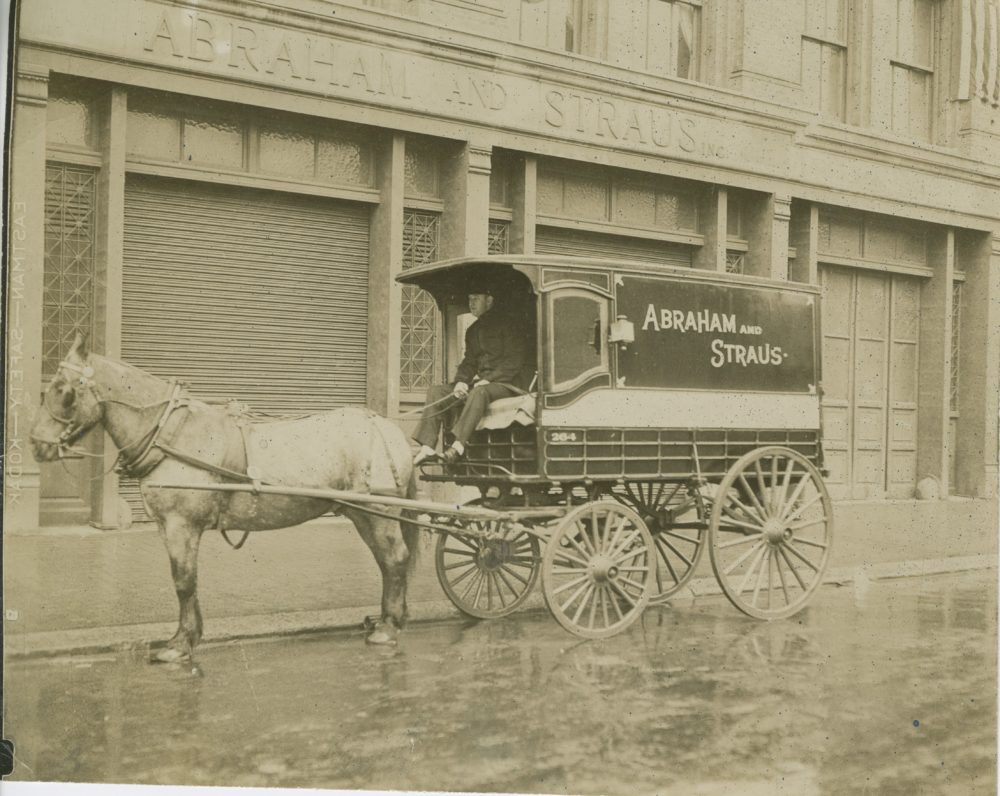
The store on Fulton Street was once the flagship for the Abraham & Straus chain (Photo courtesy of Macy’s)
In the renovated Brooklyn store, shoppers can see Macy’s answer to that challenge, especially in the housewares department on the lower level. The proprietary Hotel Collection—“It’s all the luxury you could want”—has everything from dishes to coffeemakers to linens, all developed for Macy’s.
Frequent special sales were another problem for Macy’s, “getting into a cycle of constantly discounting stock to sell it through. This got the customer accustomed to only purchasing when a product was discounted,” Saunders said. The redesigned Brooklyn store was dotted with signs advertising the idea of “one low price.”
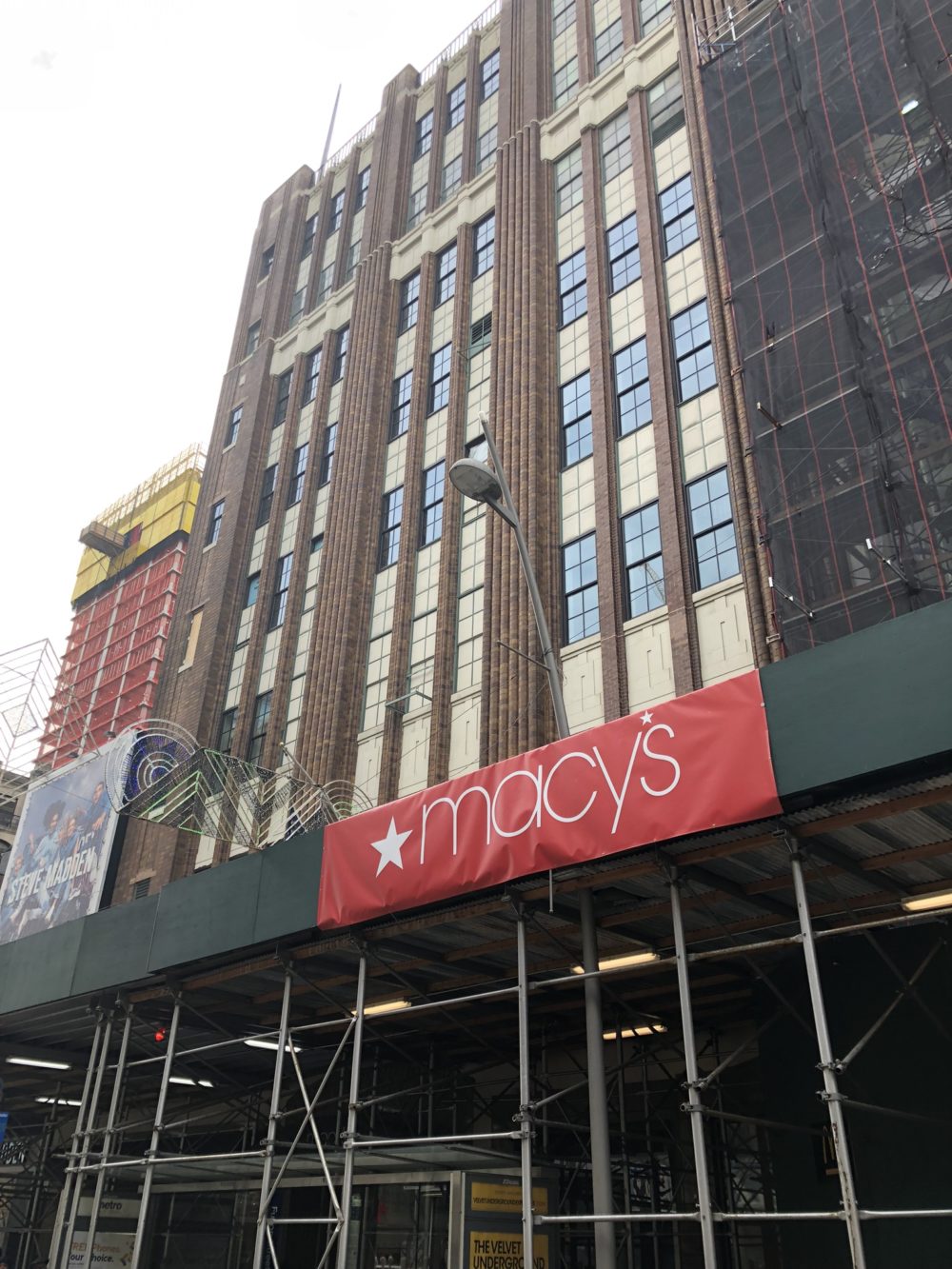
Scaffolding still partially blocks the view of the Art Deco edifice as its makes its transition into a mixed-use complex called The Wheeler (Photo by Patrick Smith)
While growing the house brands are part of Macy’s strategy, the company is simultaneously bringing in eye-catching popular brands. The ground floor now has an expanded, 18,000-sq.-ft. cosmetics department, with name-brand counters including Dior, Bobby Brown, Kiehl’s, Philosophy, and Benefit Cosmetics. The same floor offers name-brand handbags, a LensCrafters outlet, and an At Your Service center.
The second floor is the men’s department, with brand additions including Super Dry, Armani Exchange, and Lacoste. On the third floor is women’s read-to-wear (featuring DKNY, Rachel Roy, and Juicy Couture) and a new shopping service called MyStylist @ Macy’s. The fourth floor has children’s wear and intimate apparel.
Will the new look turn the company around? Macy’s beat their early fiscal 2018 financial predictions, with CEO Gennette saying in a call to investors that “we are still early on in our journey, but as I look at the progress we’ve made on merchandising, on our strategic initiatives, the re-engineering of our marketing machine … I feel good about the work that’s underway and optimistic about Macy’s Inc. future.”
The company may be benefiting from a tailwind, at least at the moment. “Macy’s has done some good things and some smart things with their stores,” said Saunders. “The slight issue is that the consumer economy is very robust. How much of this growth is due to Macy’s and how much is due to the market?”
In Brooklyn, at least, Macy’s has a fresh face and a new start. Said Alice Avouris, the shopper from Windsor Terrace: “It does matter how a store looks.”













